By Justin Meek, AICP, Northern Treasurer, October 22, 2024
In June 2024, a group from the Santa Cruz region consisting of staff and electees from the cities of Sant Cruz, Capitola, Scotts Valley, and Watsonville, as well as representatives of the University of California, Santa Cruz, and Santa Cruz County, traveled to the Netherlands for a 3-day intensive study visit. Santa Cruz-based Ecology Action organized the trip to build on the 2022 ThinkBike workshop, also organized by Ecology Action, to advance bicycling in the Santa Cruz region. The group met daily with members of the Dutch Cycling Embassy for morning briefings and afternoon rides.

The study visit began in The Hague, a city near the sea like Santa Cruz, although Santa Cruz is not below sea level and protected by sea walls. Morning presenters included:
- Teun Zeegers, the International Policy Officer – Active Mobility in the country’s Ministry for Infrastructure and Water Management;
- Teije Gorris, owner of Go-bility, which is an organization providing capacity development for professionals and organizations on active and safer mobility;
- Alex van Gent and Matt Berden with Arcadis, a leading global consulting firm in the area of sustainable design and engineering; and
- Ruben Loendersloot of Loendersloot International.
Collectively, they covered a wide range of topics, from designing cycling networks to influencing travel behavior. After presentations indoors, the group hopped on our bikes and cycled around the city to the beach. When asked on a scale of 1-5 what my level of stress was biking in The Hague, I responded, “Zero.”
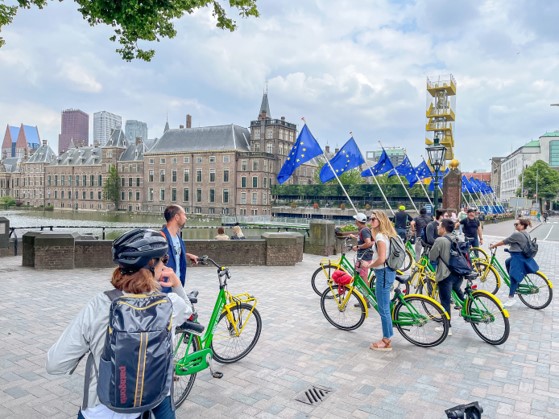
Over the next two days, we visited the cities of Rotterdam and Delft. Rotterdam is the second biggest largest city in the Netherlands, and by comparison is more urban than the others. Known for its pottery, Delft is a city of about 100,000 and has one of the top universities in the world. Visiting these cities allowed the group to discuss and see firsthand everything from innovative intersection designs to car-free school zones. The bike tour even took participants to the outskirts of Delft for a rural cycling experience connected seamlessly with Delft’s city center.
Participants came away with new ideas about improving bicycling and were imbued with enthusiasm. Many also created new connections that will help advance collaborative work throughout the Santa Cruz region. Below are comments from several of the participants. Experiences gained and lessons learned from our visit to The Netherlands are organized in this Netherlands Trip presentation.

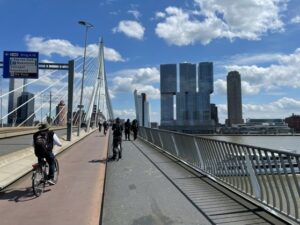
Murray Fontes, Assistant Public Works Director/City Engineer at City of Watsonville Public Works & Utilities Department, Watsonville, CA
I appreciated seeing how Netherlanders made their transportation system work for so many modes of transportation, including bikes. I also appreciated the collaborative approach taken by all participants and look forward to working with representatives of the other agencies to identify what we can do moving forward. I hope to use what we learned on upcoming projects, such as the evolving ZEPRT project, the Vision Zero Corridors Planning Grant, and the transportation plans that will come out of the General Plan update.
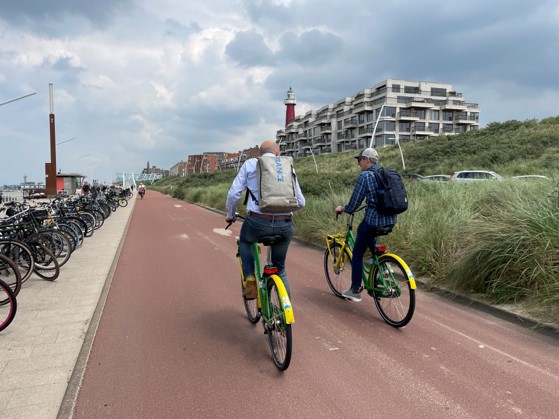
Tommy Travers, Transportation Planner, Santa Cruz County Regional Transportation Commission
One more infrastructure idea I’d like to see included in recaps of the Netherlands trip – besides the protected bike lanes, paths, and protected roundabouts and intersections – is the treatments for low-volume streets that were common there. As I experienced, their approach was consistently to narrow all low-volume streets’ travel space to the width of little more than one vehicle but with two-way traffic so that drivers must go slow and find gaps in parking to pass each other. And the speed limits were 19mph, often less in school zones. And for some of the minor collectors, they often would do what I think of as a much better alternative to the sharrow, which is to leave a full travel width of maybe 25′ between the parked cars but with dashed bike lanes on both sides, leaving a narrow space in the center for two-way cars, which can merge into the bike lanes to pass each other but otherwise stay in the middle; these streets also had a low speed limit of 19mph. I think it’s important to emphasize that anywhere where there is no right-of-way space to provide protected bike lanes, the solution is to slow cars way down with proper design so that sharing space with bikes is comfortable for everyone.
Another design approach omnipresent in the Netherlands, Belgium, and even in Paris now is that there are no one-way street limitations on bikes. All streets that allow only one direction for cars have an exception for bikes, except for the lowest volume ones, which have space striped for that reverse-direction bike lane. Of course, their speed limits are also consistently low, typically 19mph for these street configurations.
Last, I thought the approach used by the Donkey Republic bike share system was the best type of bike share system I’ve ever used in terms of cost, convenience, and impact on pedestrian space.
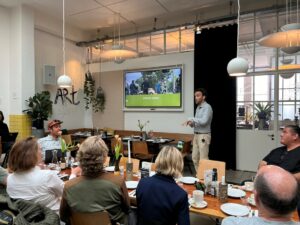
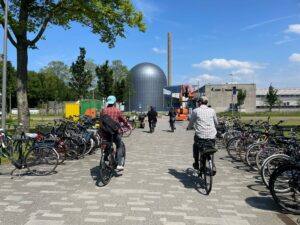
Sarah Wikle, Senior Planner, Community Development, City of Scotts Valley
When we talk about bicycle and pedestrian infrastructure, we cannot forget to bring parking management along for the ride. Without adequate parking management strategies such as parking garages, investments in bicycle infrastructure will have a challenging time getting off the ground.
Also, cutting down on “through” trips with cars and re-routing vehicular traffic along the outskirts of town so that higher speed vehicular traffic is separated from city centers where cycling and walking are the main modes of transportation.
Cycling and walking to and from city centers also creates additional opportunities to plan for public space more thoughtfully, creating opportunities for the community to stay and enjoy public plazas and outdoor dining opportunities.
My biggest takeaway was the link between economic/community development and cycling infrastructure. You can’t have one without the other. As we continue to think about the creation of specific plans and other planning documents, I am going to keep at the forefront of my mind that if we plan for the public realm in a way that prioritizes people and communities, mixed-use projects and dense housing developments can feel less physically imposing and can find solutions to reductions in car parking that make sense for communities. It was great to see some of the DWSP ideas come to life in the Netherlands.
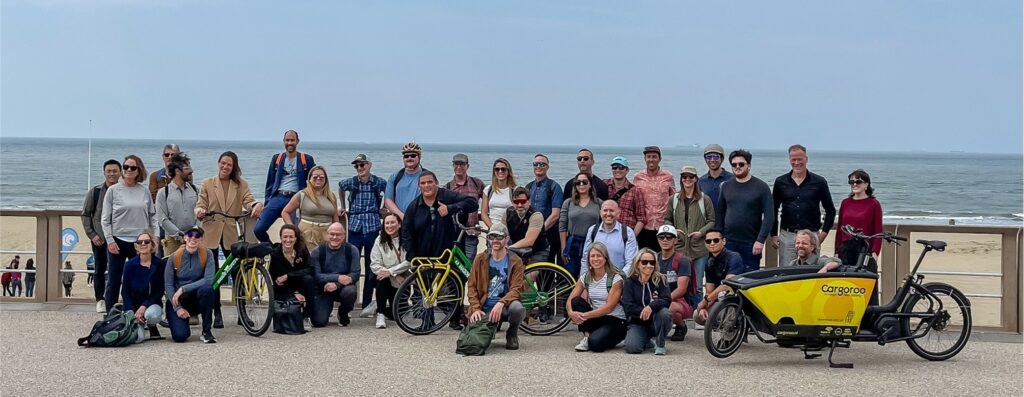
About the author
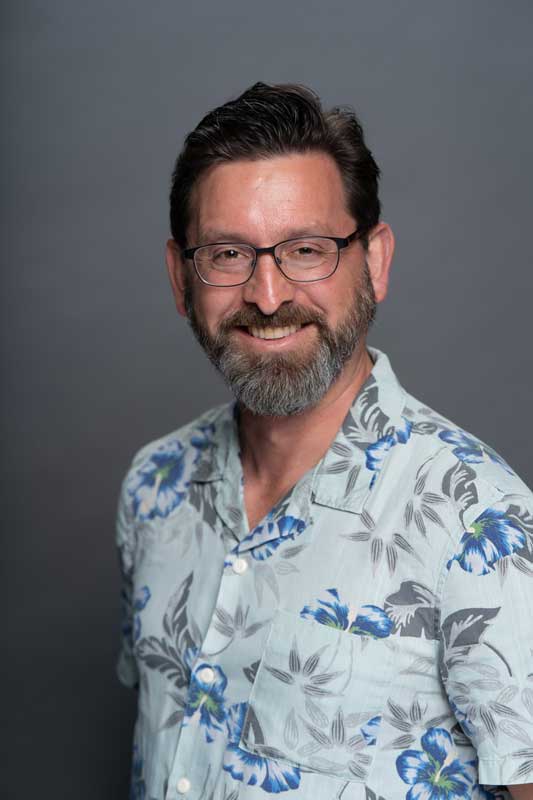
Justin is the Assistant Community Development Director at the City of Watsonville. He has over 20 years of professional experience on planning and environmental projects in both the public and private sectors. His work has included a wide array of public experience, from long range planning (e.g., general plan updates and specific plans) to all types of current planning projects (e.g., use permit, design review). His past work also includes managing the preparation of the Marina Municipal Airport Master Plan and teaching a community assessment course at San José State University in the Urban and Regional Planning Department. He currently serves as the APA California – Northern Treasurer and is a member of the American Institute of Certified Planners. Mr. Meek received his MURP in Urban and Regional Planning from San José State University and his BA and BS in Environmental Studies and Earth Sciences from UC Santa Cruz.
